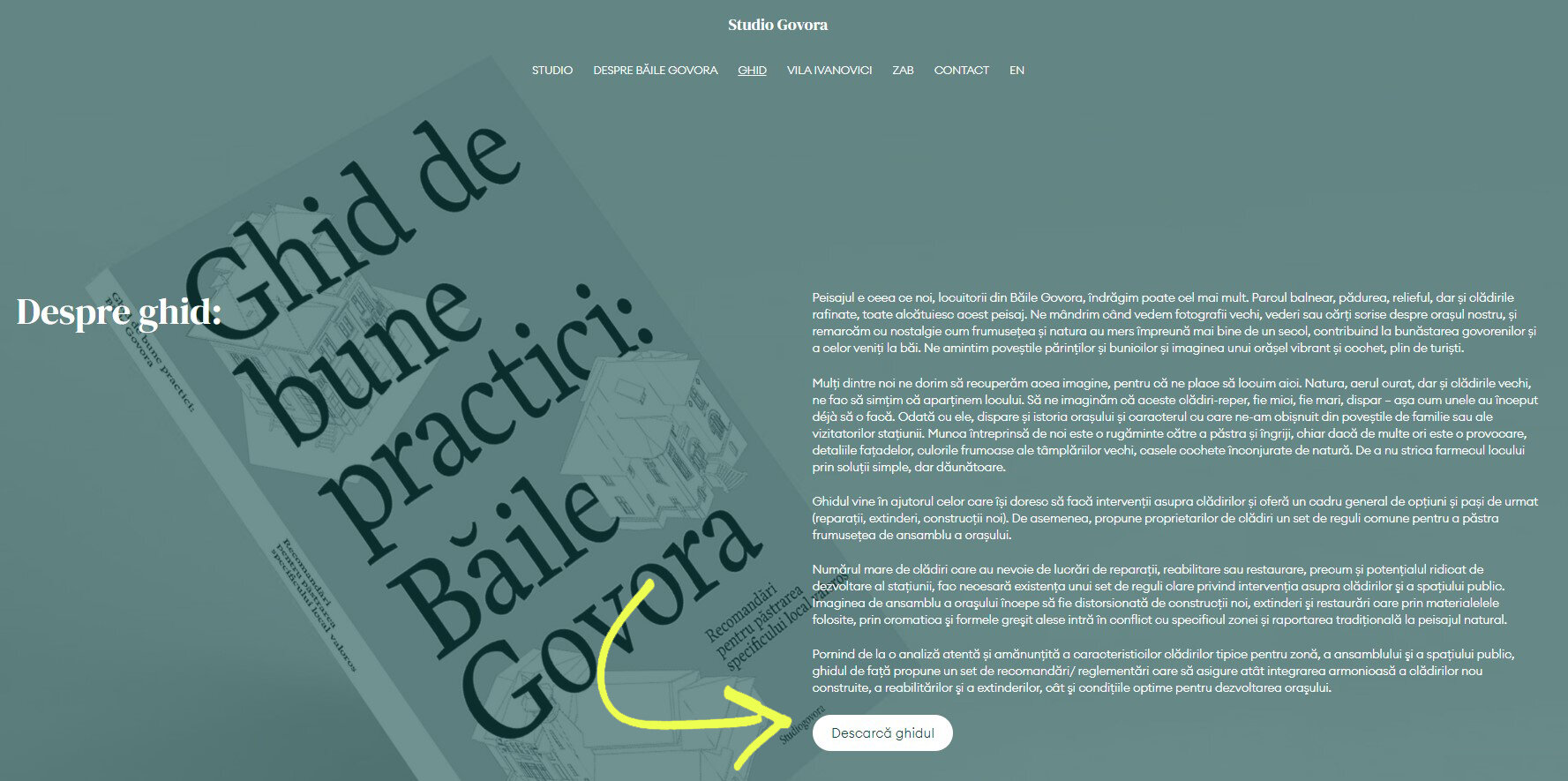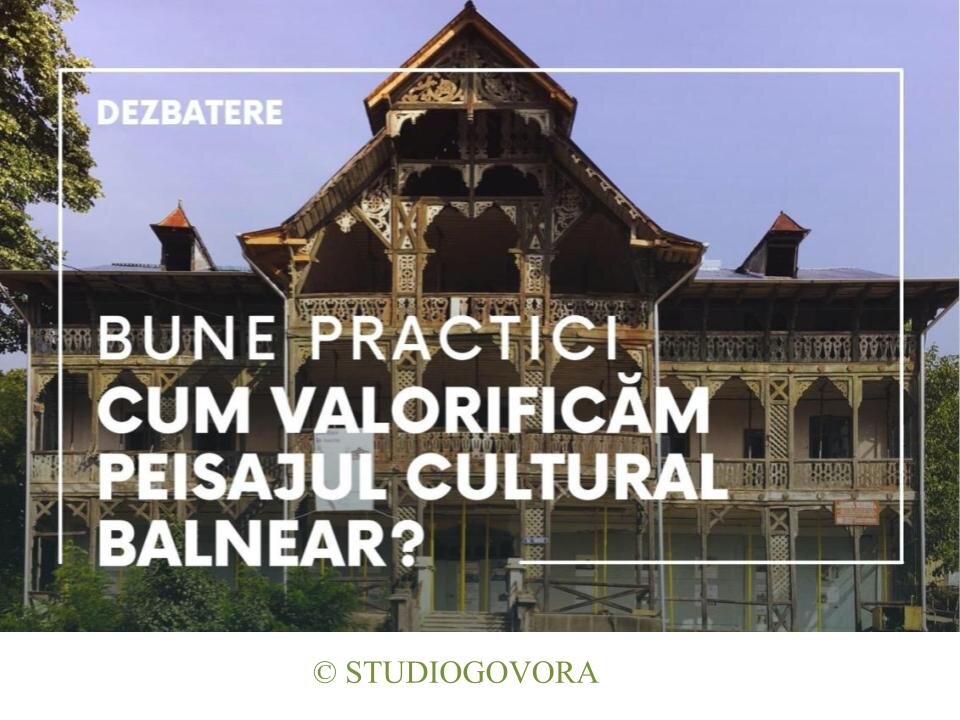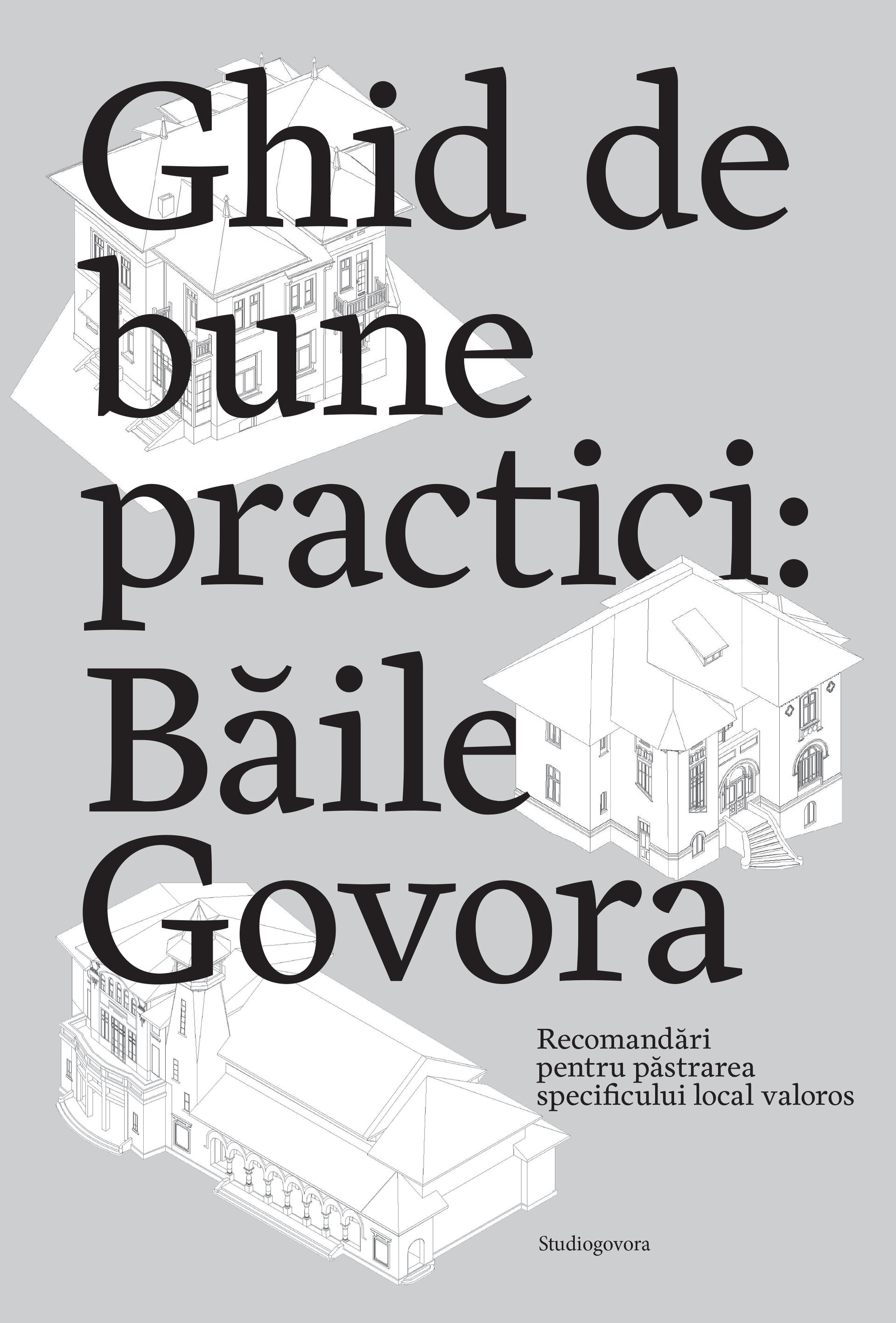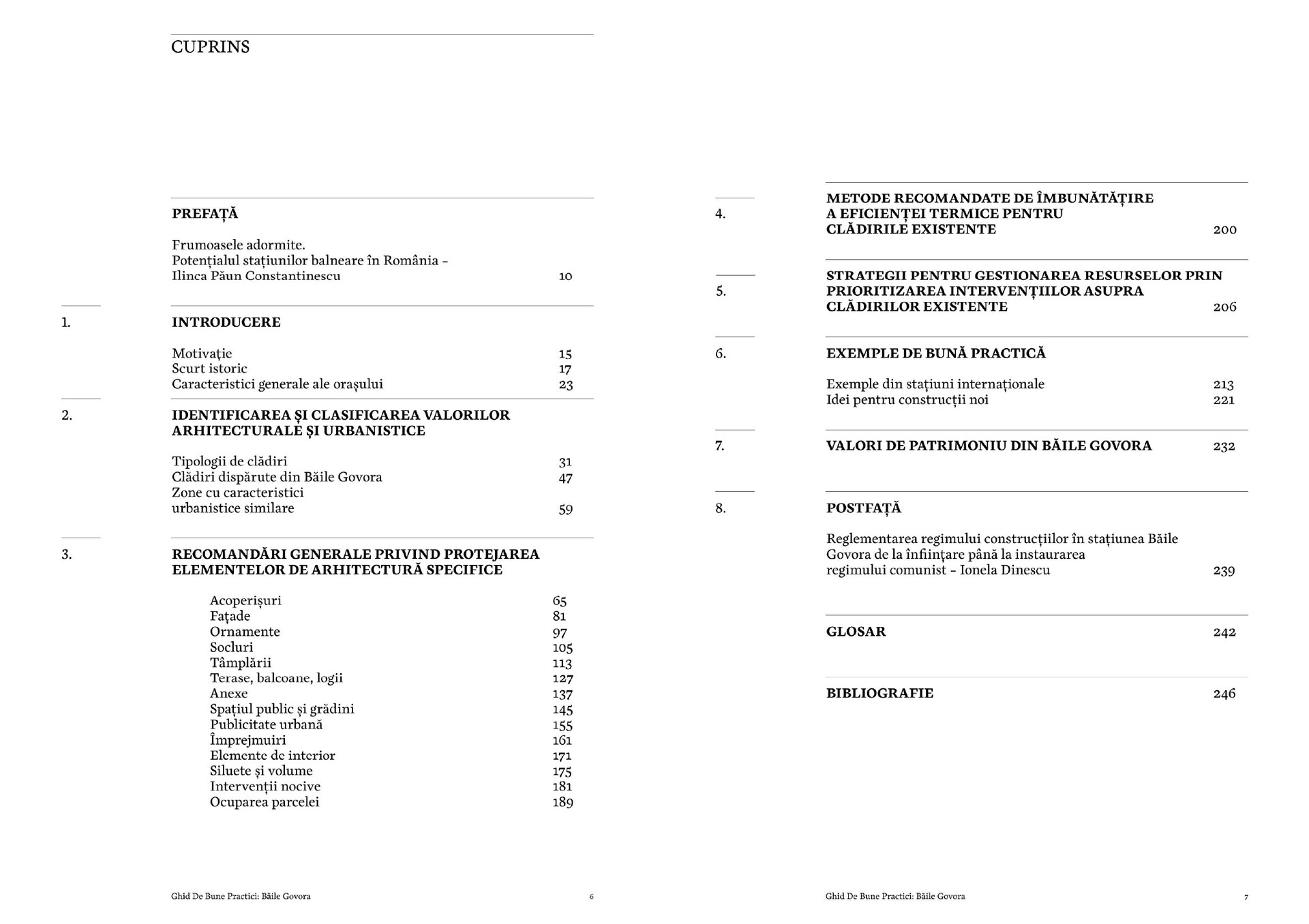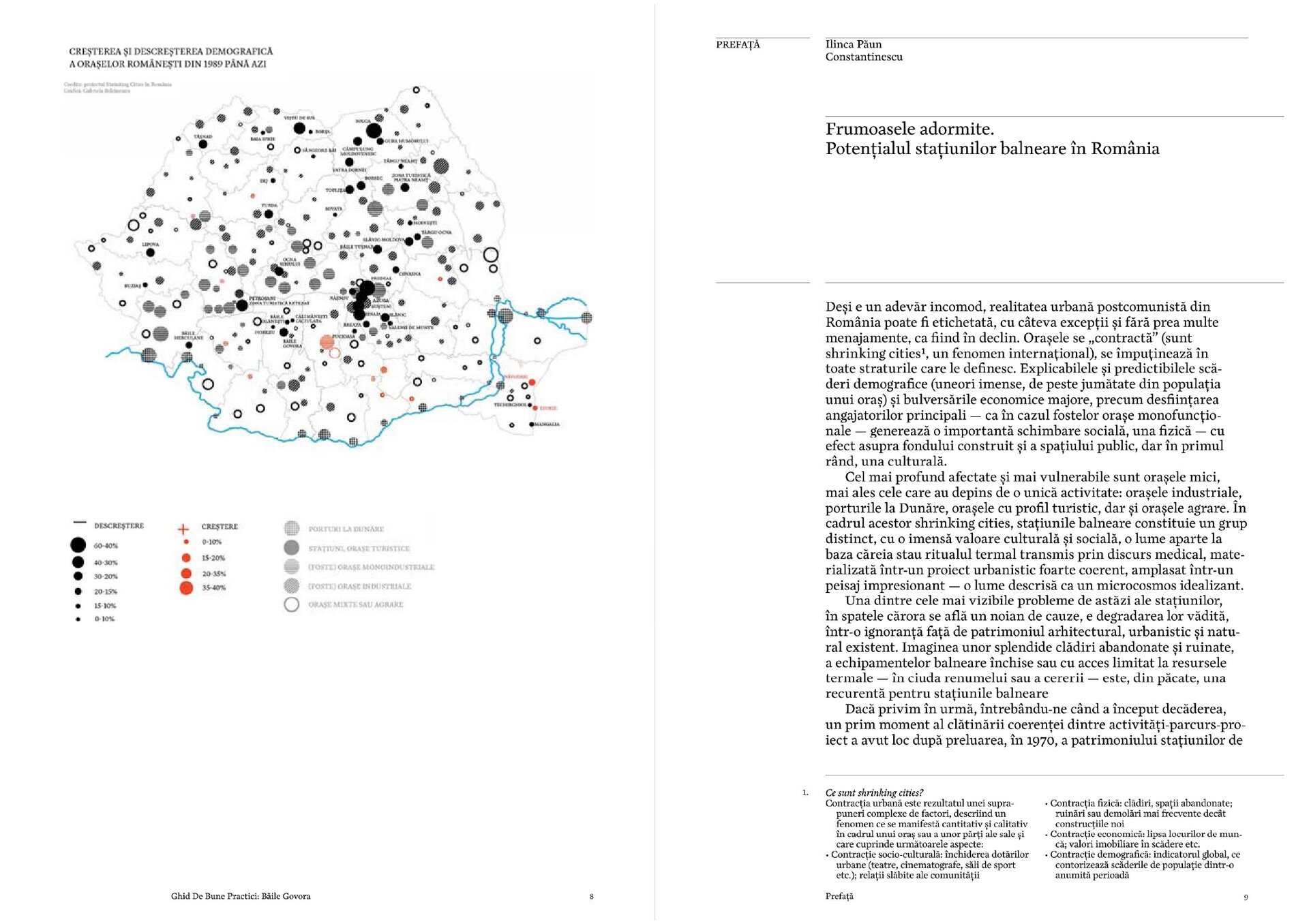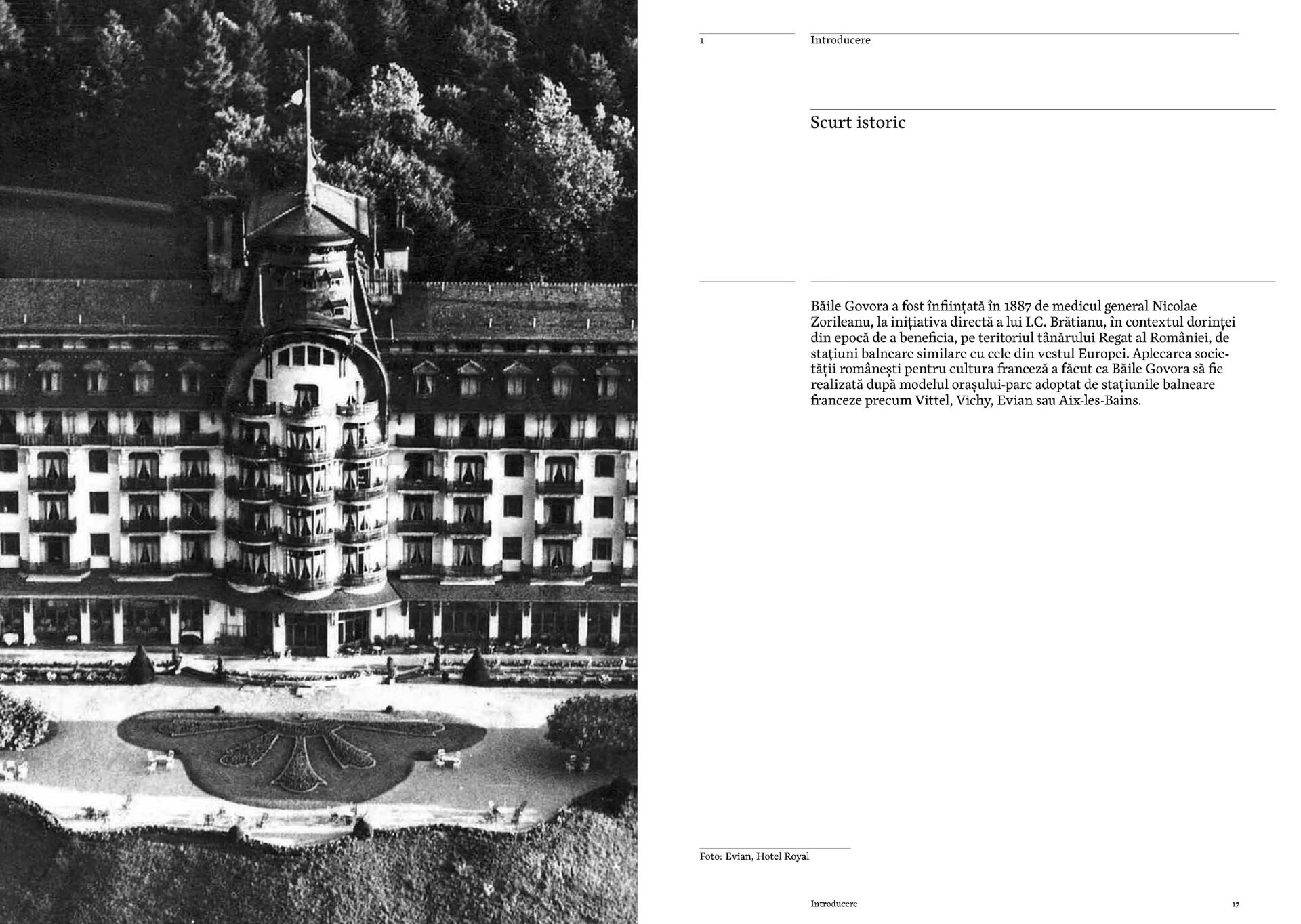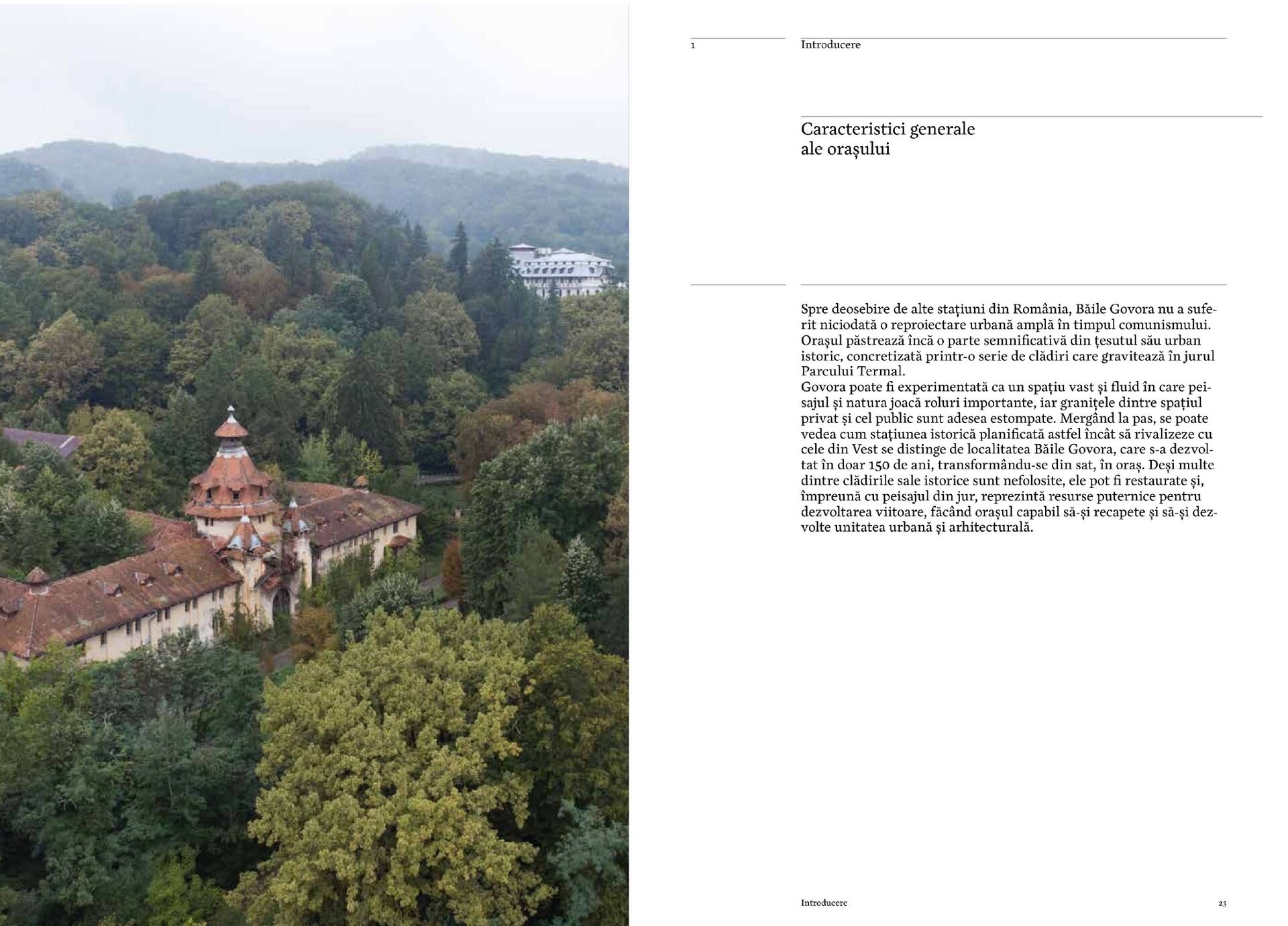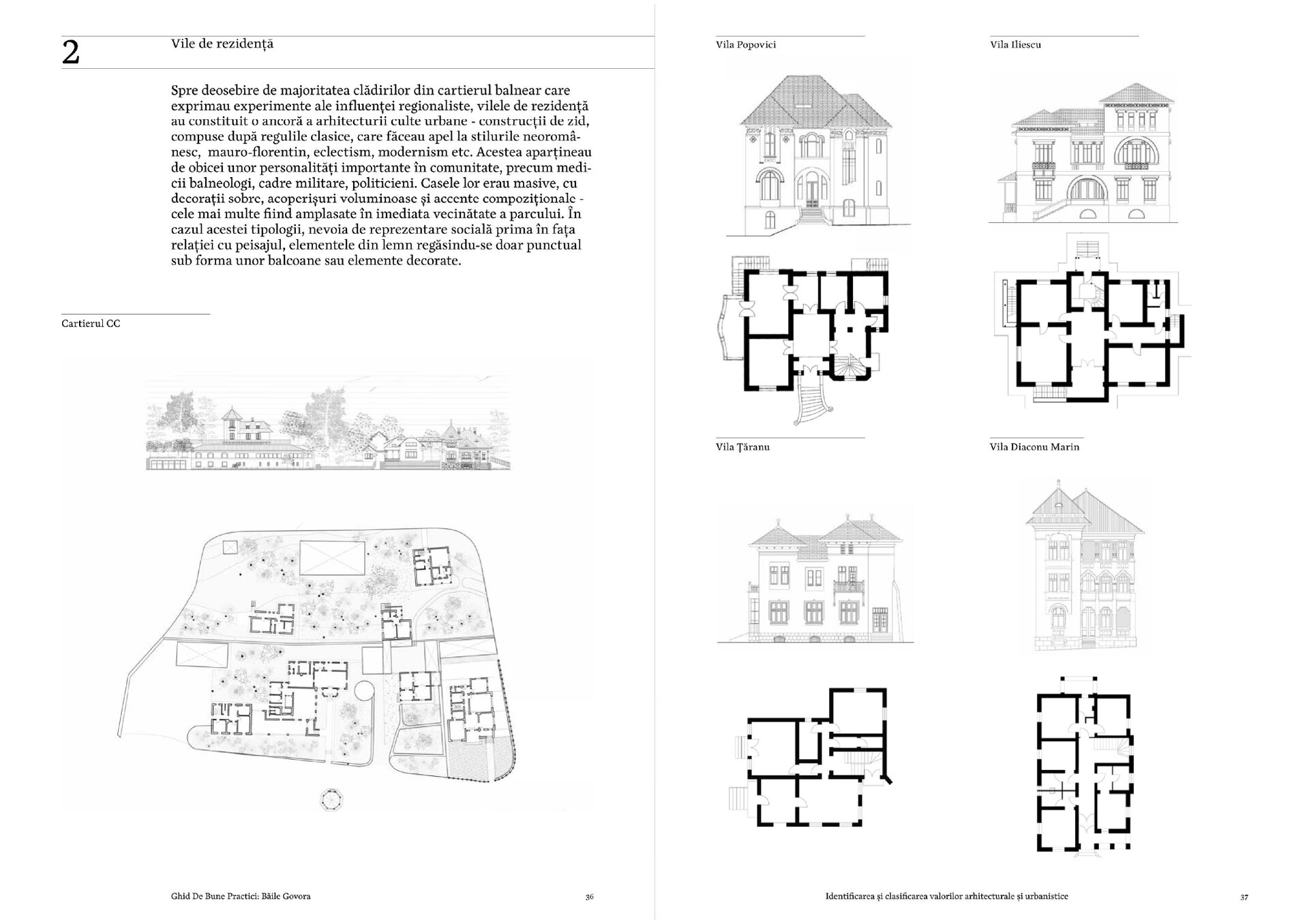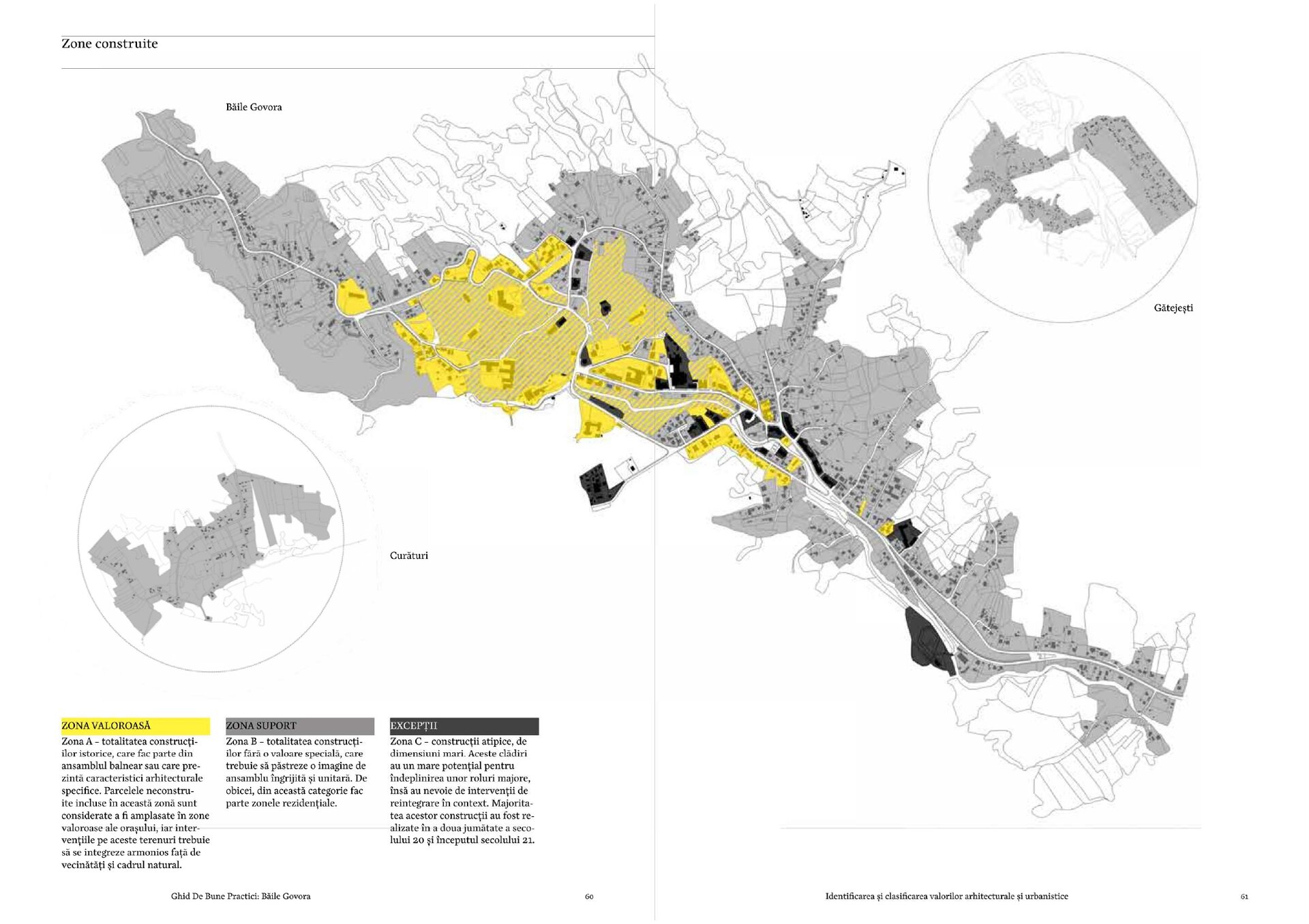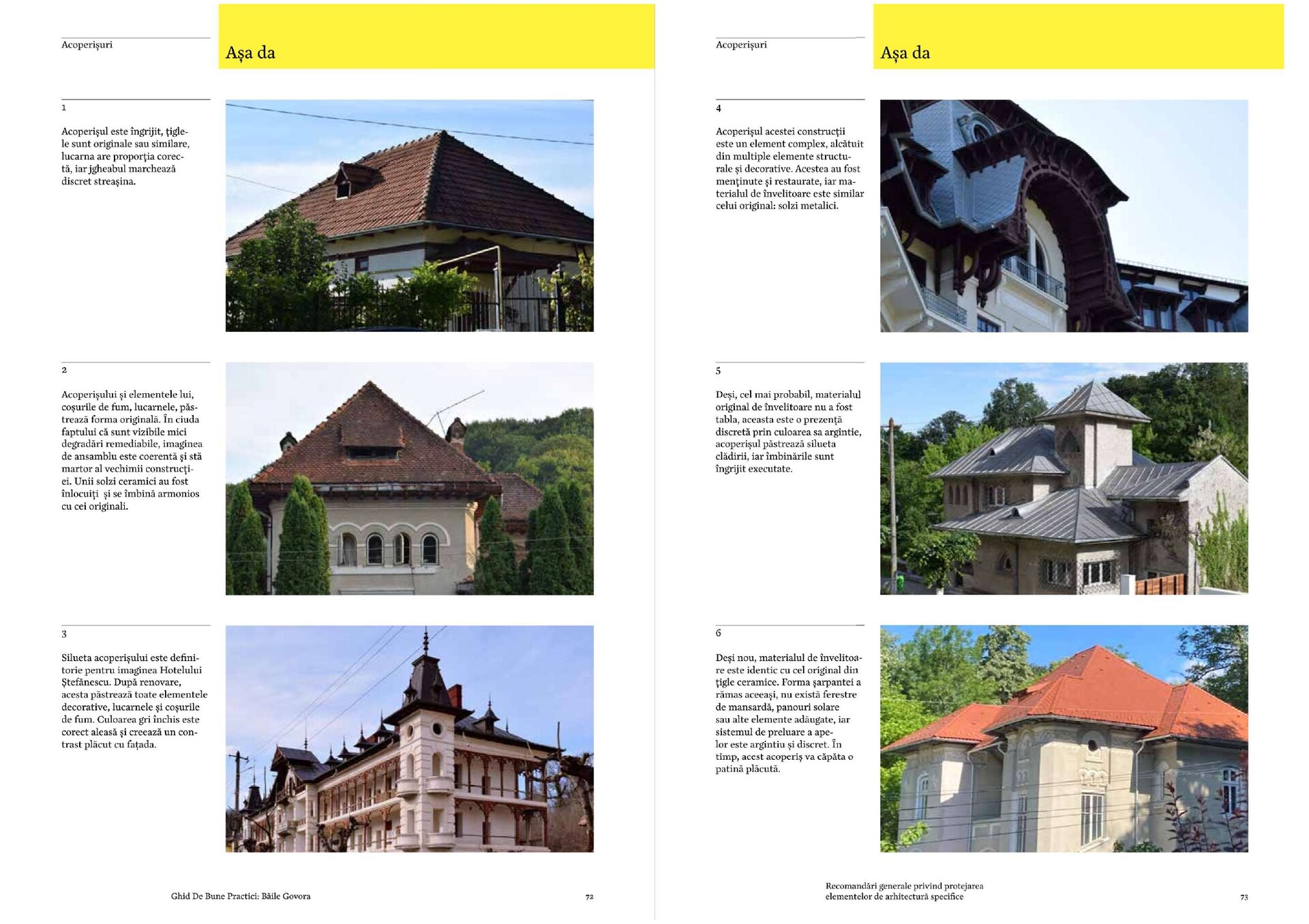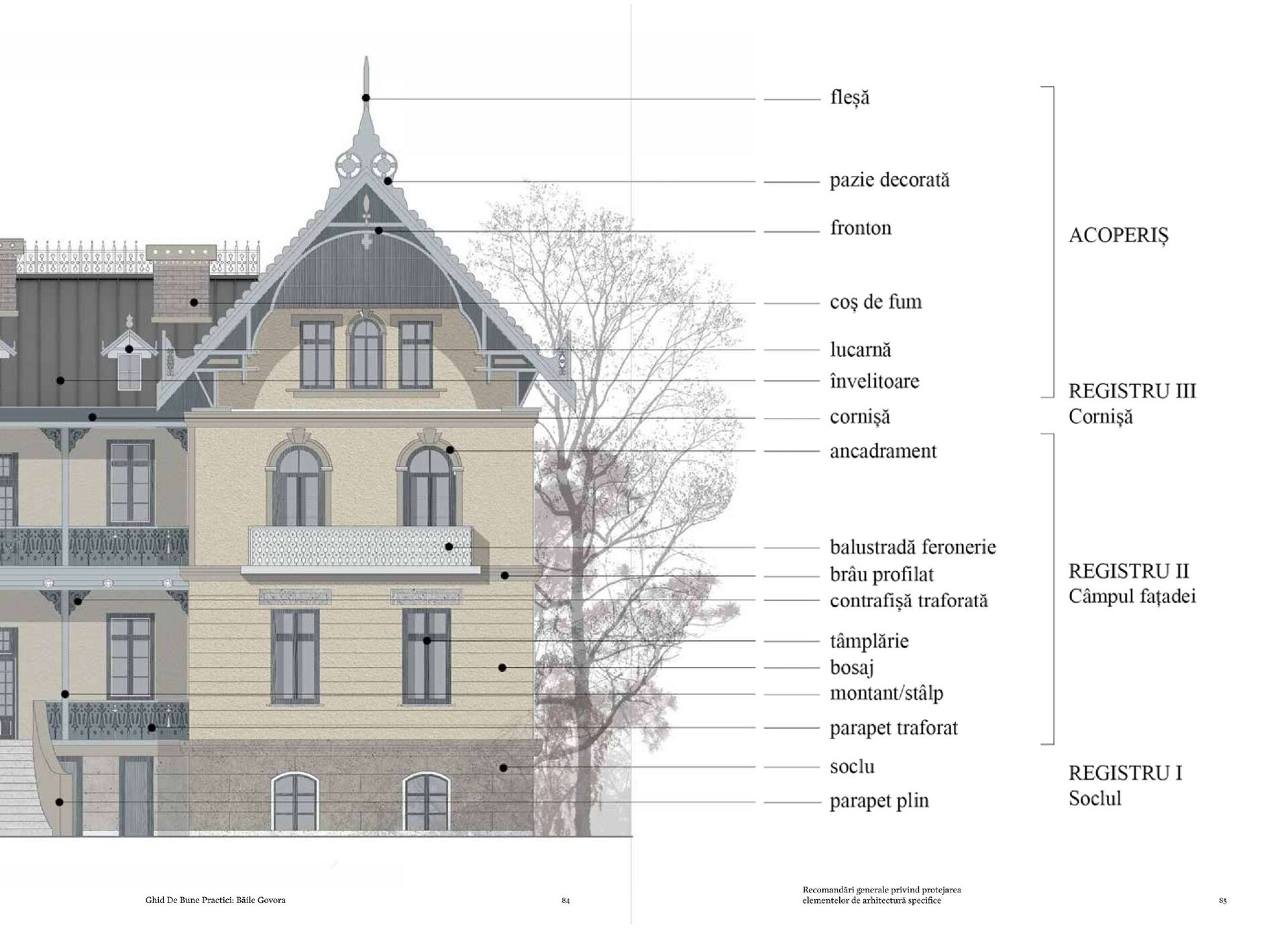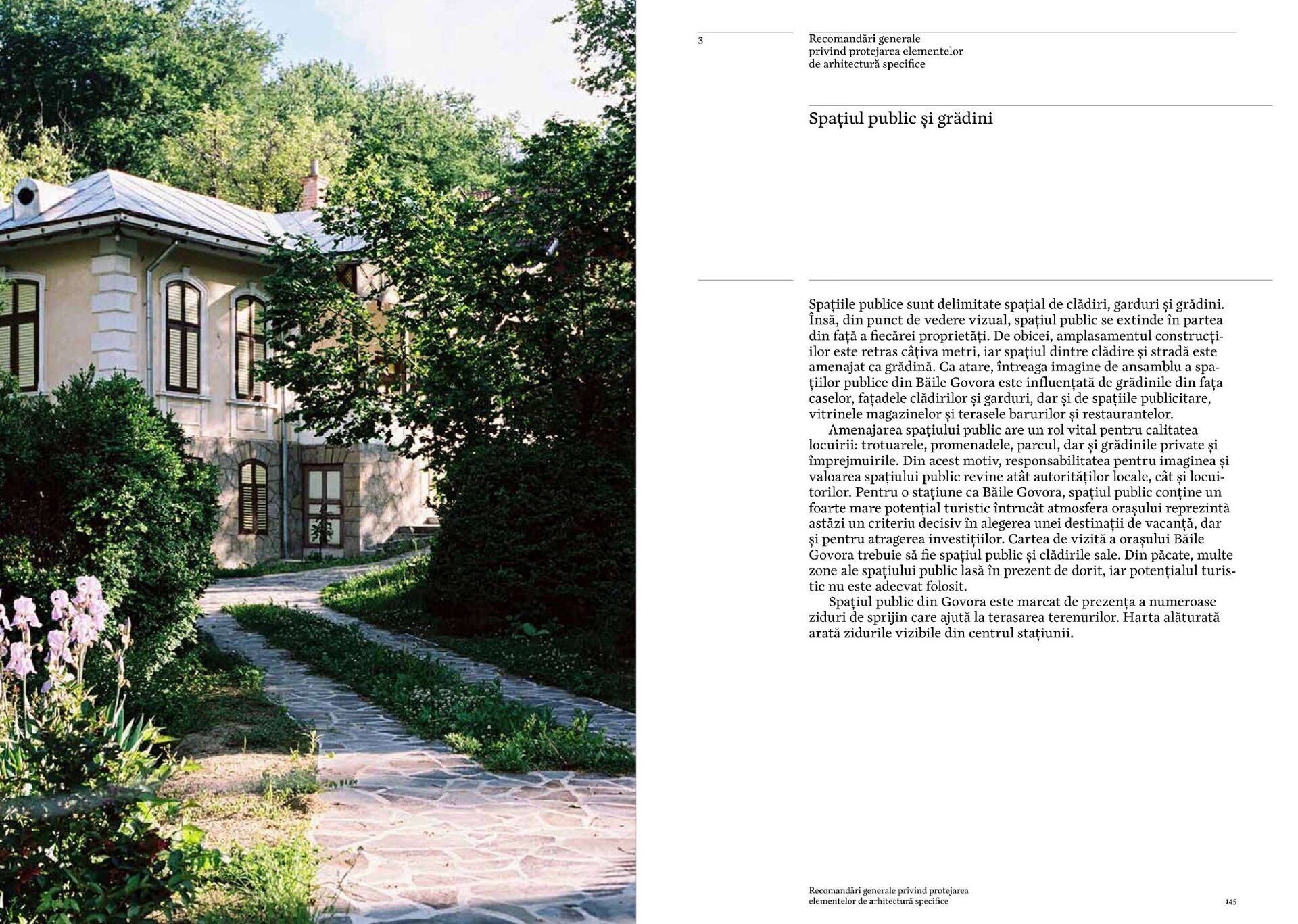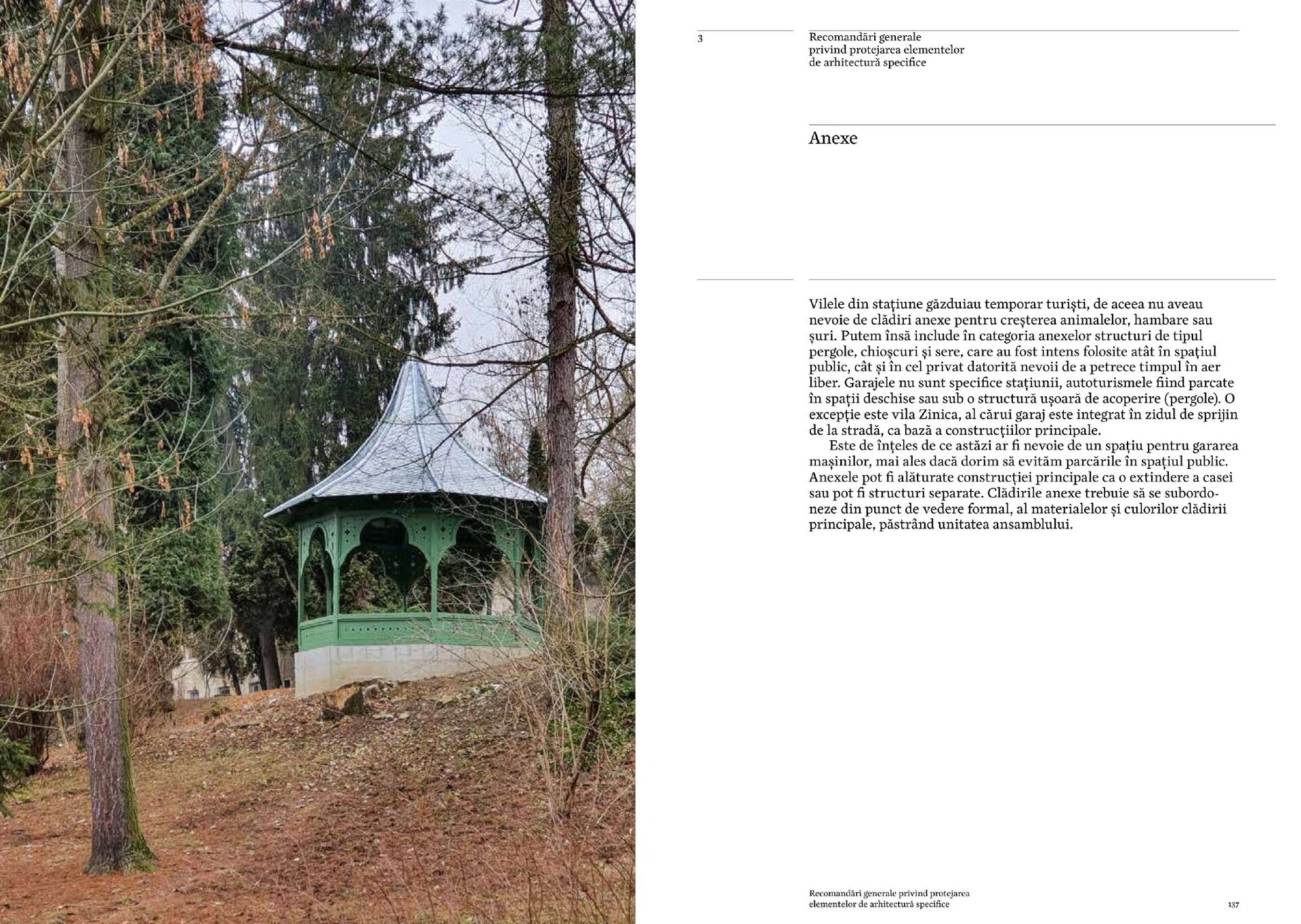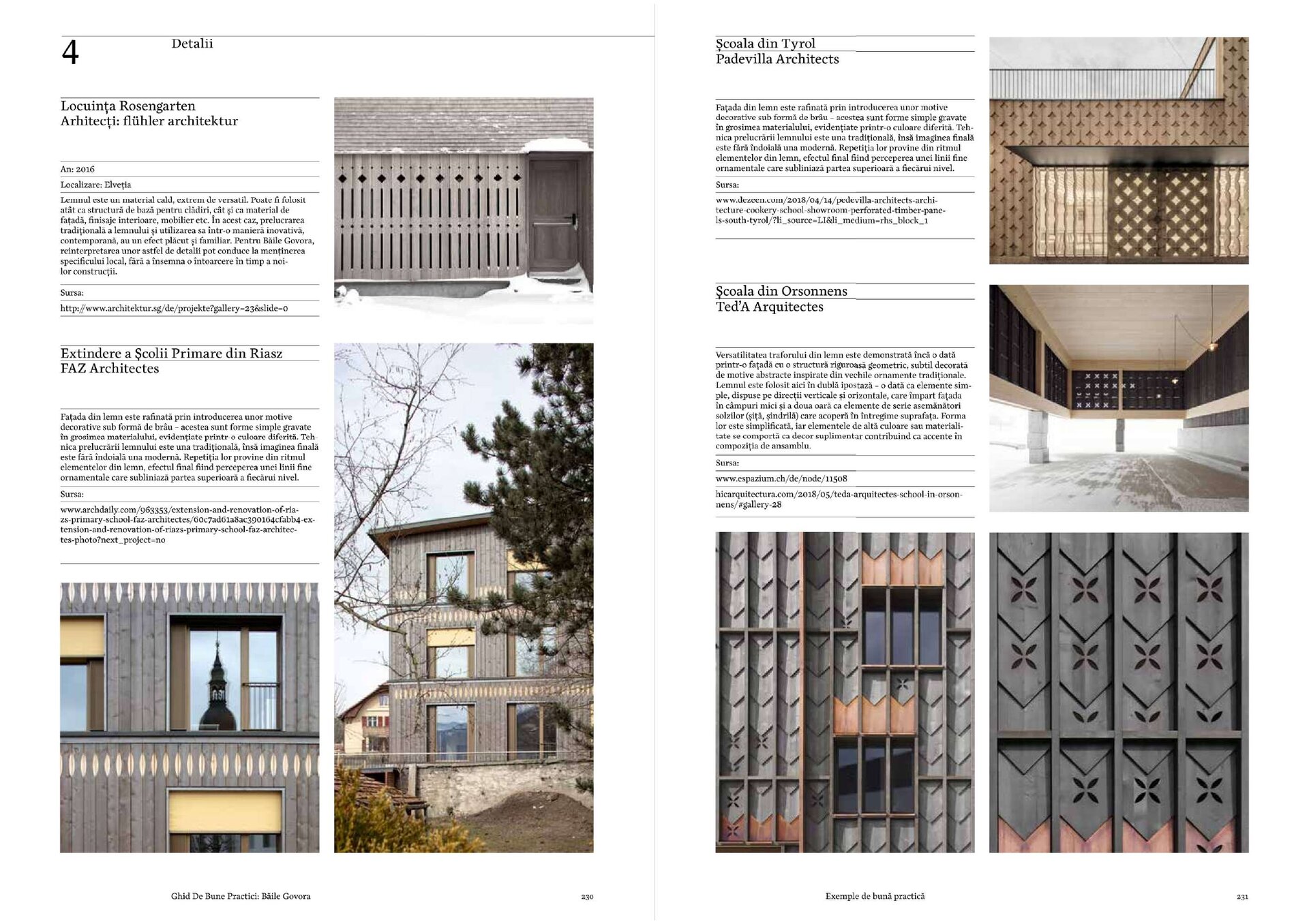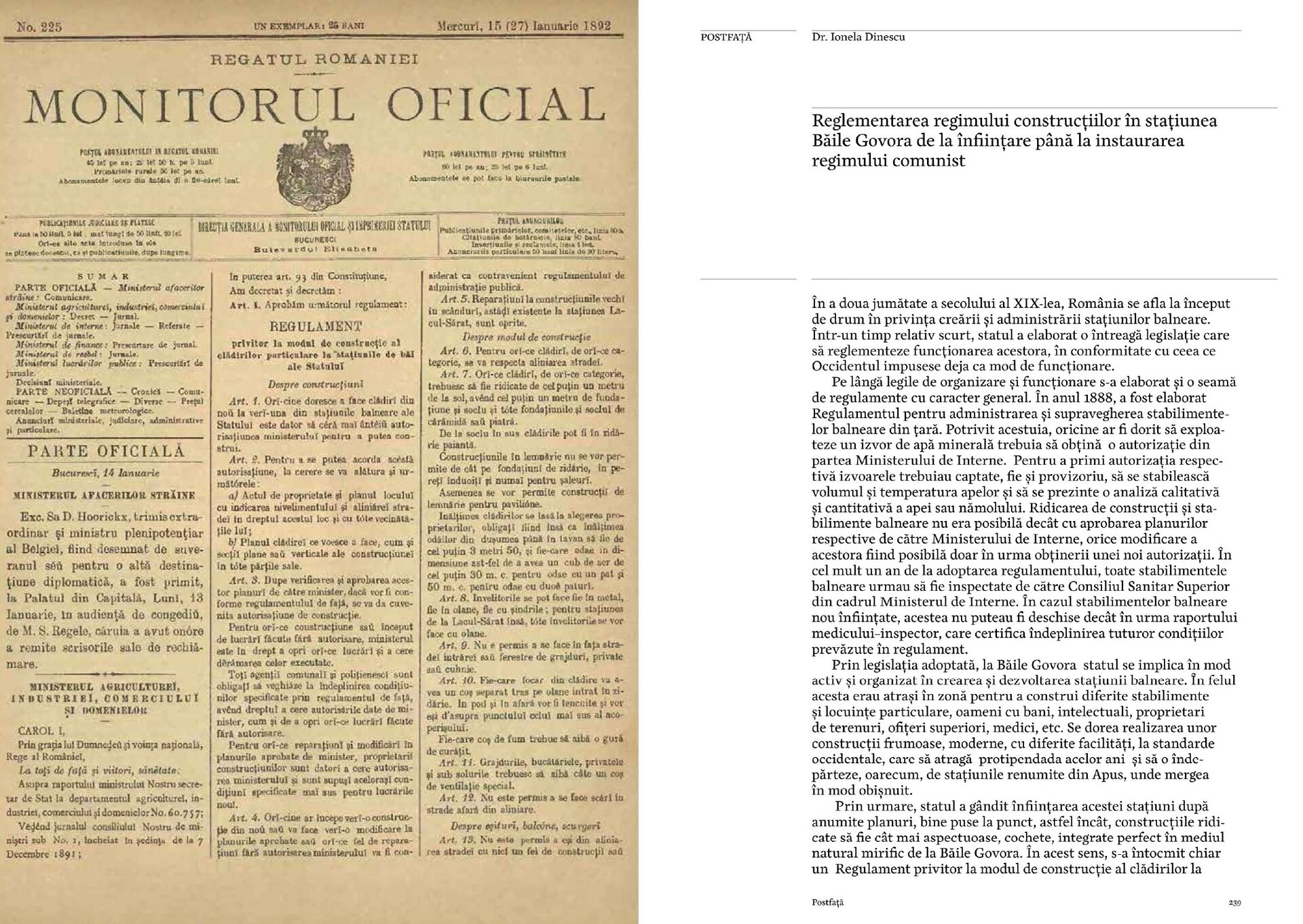
Best practice guide: Băile Govora case
Authors’ Comment
The overwhelming number of buildings that need repair, rehabilitation or restoration works, as well as the resort's high development potential, bring forth the necessity of having a clear set of rules regarding new interventions on buildings and public space. The overall image of the town risks being increasingly distorted by new constructions, expansions and restorations that come into conflict with the architectural specificity and the traditional relationship with the natural landscape, due to the use of inappropriate construction materials, colors and volumes. This situation catalyzed the efforts of the Studiogovora civic initiative group, whose aim is to improve the quality of future local official documents and provide reasonable alternatives for upcoming investments in the rehabilitation of the buildings in Govora.
The guide sets forth a unified direction of intervention, which emphasizes the quality of public space and the preservation of the character of local built environment, with the aim of fully using the town's potential and touristic vocation.
Starting from a thorough analysis of the historical thermal park, of public space and of buildings typical for the area, the guide describes each type of architectural element: facades, carpentry, ornaments, balconies and terraces, roof coverings, etc. extending to garden design and the relationship between built environment and landscape. The coordinated treatment of all the components would ensure both the integration of newly built buildings, rehabilitations and extensions, as well as the optimal conditions for the coherent development of the city.
In addition to technical content, the guide also contains general information about the resort and its history. The guide also describes the wider context of spa resorts at national level. On the one hand, during and following the time of their creation, there is an obvious concern on the part of authorities to transform spa resorts into places with the highest standards of public health and architectural and landscape quality by imposing strict urban regulations. On the other hand, there is the current, unfavorable context of Romania’s shrinking cities, which leaves spa resorts in a latent state: simultaneously vulnerable and full of potential.
Thanks to its objectivity and general recommendations regarding the architecture of spa towns, this guide is fit for all Romanian balneary resorts.
- People at work in their homes
- Diploma Box
- Courtyards of Bucharest. The hidden potential of urban morphology
- Alfred Popper, 1874-1946: the (re)discovery of an architect
- Eternal Architecture in Romania. Cemeteries, mausolea, funerary buildings in extra-Carpathian territory (1830-1939)
- Heritage, Landscape and Restoration of Historical Gardens
- Architect Ion Căpșuneanu. Achievements and sufferings
- Toma Stelian House: a historical perspective
- Isolation in a series of liminal states
- Best practice guide: Băile Govora case
